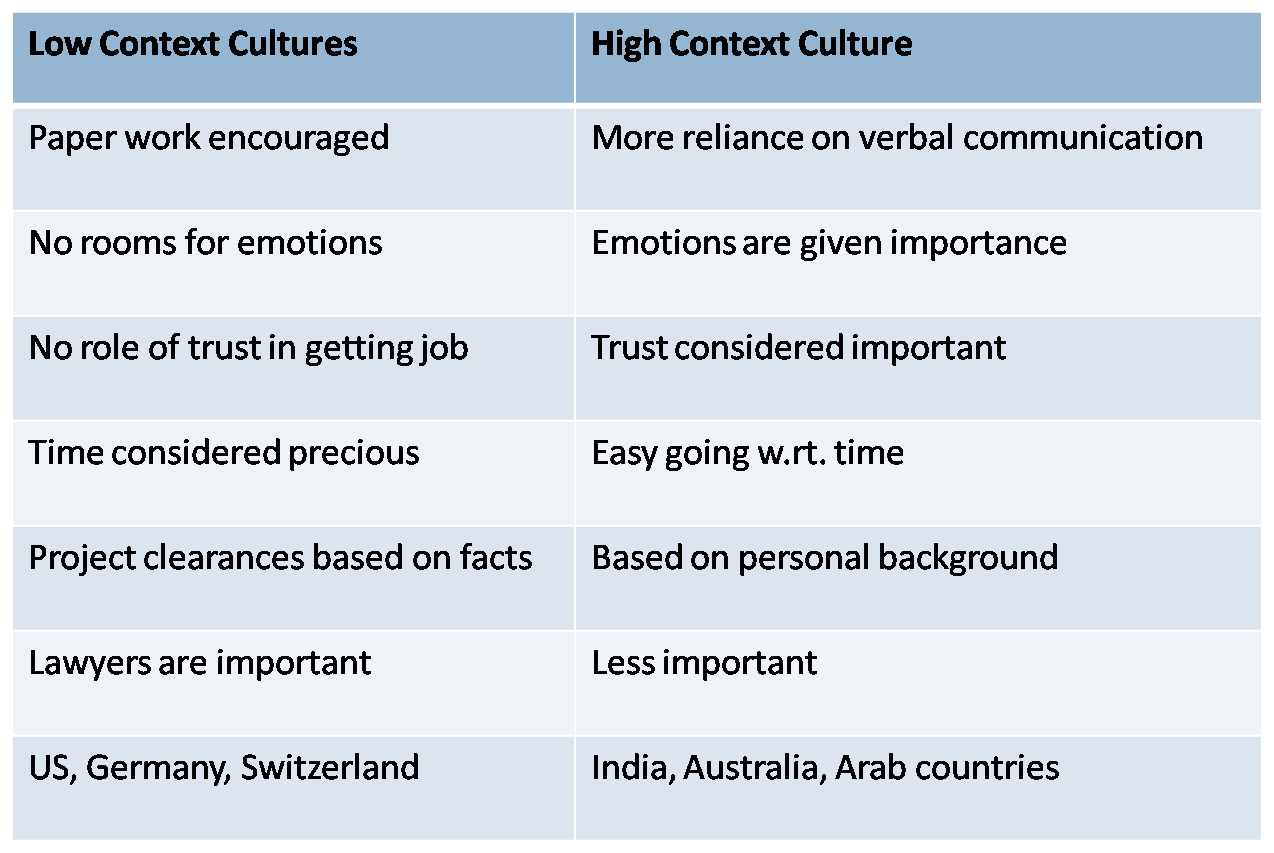Imagine walking into a meeting with a new client. You’ve prepared a detailed presentation, outlining every aspect of your project, leaving no room for ambiguity. But as you speak, you notice your client’s face remains impassive. There’s no nod of agreement, no enthusiastic questions – just a silent, seemingly unengaged presence. Are they bored? Disinterested? Or is there another reason for the lack of overt reaction? This scenario highlights a fundamental difference in communication styles: the distinction between low-context and high-context cultures.

Image: ecurrencythailand.com
Understanding the nuances of these cultural communication styles can be critical for anyone navigating the globalized world. From business interactions to personal relationships, the way we interpret and express messages is heavily influenced by our cultural background. This article delves into the fascinating world of low-context and high-context cultures, highlighting their key differences, providing real-world examples, and offering actionable tips for fostering successful cross-cultural communication.
Low-Context Culture: Explicit Words and Direct Meaning
Low-context cultures, like those prevalent in the United States, Canada, and many parts of Northern Europe, prioritize explicit communication. Meaning is conveyed directly through spoken or written words. Think of it as a clear, detailed map with all the necessary instructions.
Key Characteristics of Low-Context Cultures:
- Direct and explicit communication: Messages are stated clearly and directly, with minimal reliance on implied meaning.
- Emphasis on verbal communication: Words carry the primary weight of meaning, with less emphasis on nonverbal cues.
- Value individualistic perspectives: Independence and individual achievement are celebrated, often leading to direct expressions of opinions and preferences.
- Focus on logic and objectivity: Decisions are typically based on facts and data rather than intuition or relationships.
- Time is linear and punctual: Strict adherence to schedules and deadlines is highly valued, with time seen as a valuable resource.
Examples in the Real World:
- In low-context cultures, written contracts and agreements are highly valued, ensuring clarity and accountability.
- Debates and discussions are encouraged, as direct expression of opinions is seen as a sign of respect and engagement.
- Meetings often have strict agendas and time limits, with a focus on efficiency and productivity.
High-Context Culture: Implicit Meaning and Shared Understanding
In contrast, high-context cultures, prevalent in many Asian, African, and South American countries, rely heavily on nonverbal cues, shared experiences, and a deep understanding of social hierarchies. It’s like a map with many hidden pathways and cultural landmarks.
Key Characteristics of High-Context Cultures:
- Implicit communication: Meaning is conveyed through subtle nonverbal cues, context, and shared knowledge.
- Emphasis on nonverbal communication: Body language, gestures, facial expressions, and tone of voice play a crucial role in understanding messages.
- Emphasis on collectivism: The group’s well-being and harmony are prioritized over individual needs, often leading to indirect expressions to avoid confrontation.
- Focus on relationships and trust: Building trust and long-term relationships is paramount, often influencing decision-making.
- Time is flexible and cyclical: Meetings and events might not always adhere to strict schedules, with time viewed as a fluid concept.
Examples in the Real World:
- In high-context cultures, business relationships are built on trust and rapport, often taking time to develop.
- Indirect communication is common, with hints and subtle suggestions used to convey messages.
- Social harmony and avoiding conflict are highly valued, leading to a preference for diplomacy and face-saving communication.
Breaking Down the Barriers: Tips for Effective Cross-Cultural Communication
Navigating the differences between low-context and high-context cultures requires sensitivity and awareness. Here are some actionable tips to enhance communication across cultures:
- Active listening: Pay close attention to both verbal and nonverbal cues, and ask clarifying questions to ensure understanding.
- Mindfulness of cultural differences: Be aware of your own cultural biases and assumptions, and strive to understand the other person’s perspective.
- Patience and Empathy: Recognize that cultural differences can lead to misunderstandings. Be patient, practice empathy, and avoid rushing to judgment.
- Use of Cultural Mediators: When working across cultures, consider using cultural mediators or linguists who can bridge the communication gap.
- Be Respectful: Show deference to cultural norms, customs, and etiquette. Avoid using offensive language or humor.

Image: helengunadi.blogspot.com
Expert Insights: Harnessing the Power of Understanding
“Understanding the communication styles of different cultural groups is crucial for effective global engagement,” says Dr. Lisa Flores, a renowned intercultural communication expert. “By embracing cultural sensitivity and practicing active listening, individuals can forge stronger relationships and navigate complex cross-cultural interactions with greater success.”
Low Context Culture Vs High Context Culture
Conclusion: Building Bridges Across Cultural Divides
The distinction between low-context and high-context cultures is a reminder that language is not just a set of words; it’s a tapestry woven with cultural threads. By understanding the nuances of these communication styles, we can build bridges across cultural divides, fostering empathy, connection, and effective communication in an increasingly interconnected world. As you continue your journey of communication, remember to cultivate curiosity, listen attentively, and embrace the richness of cultural diversity. This will not only enhance your communication skills, but also empower you to connect with the world in a more meaningful way.



/GettyImages-173599369-58ad68f83df78c345b829dfc.jpg?w=740&resize=740,414&ssl=1)


